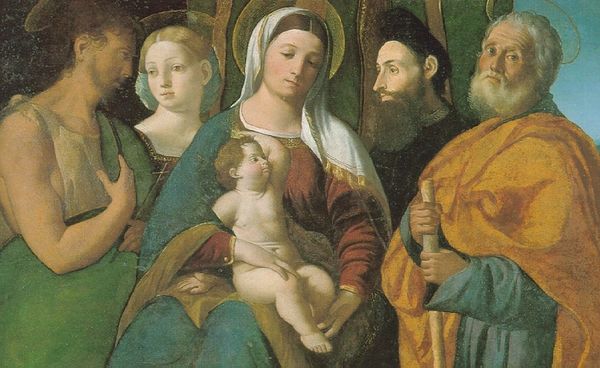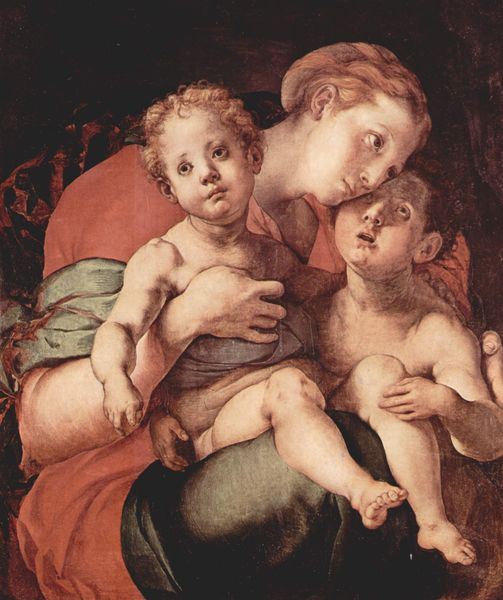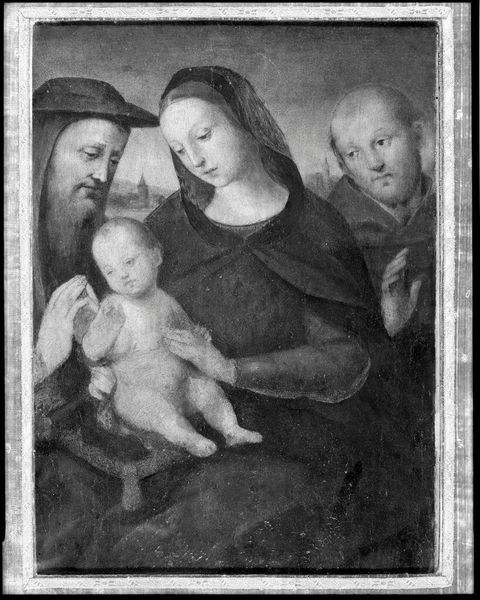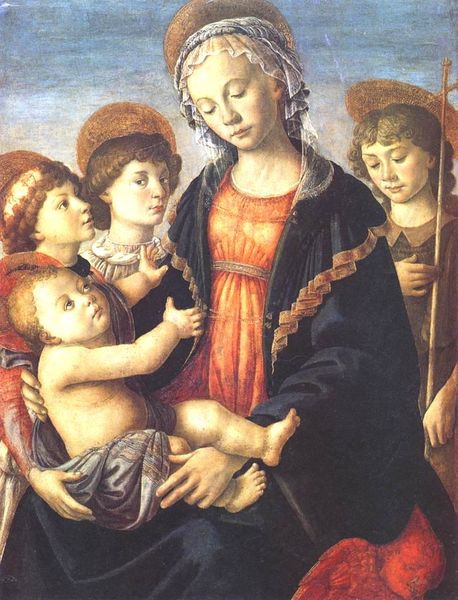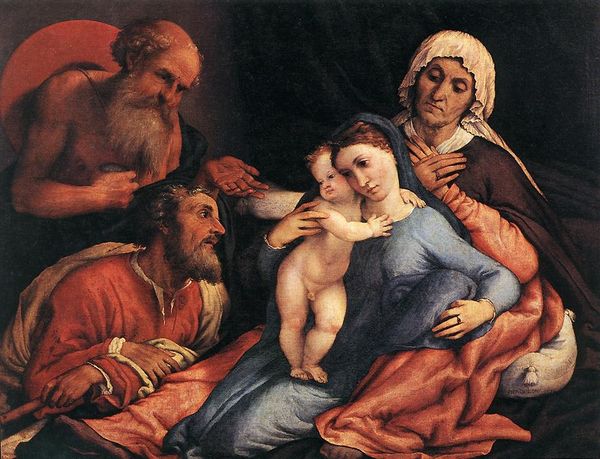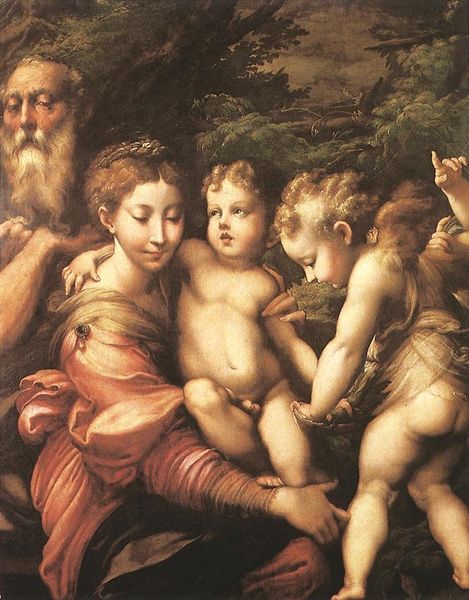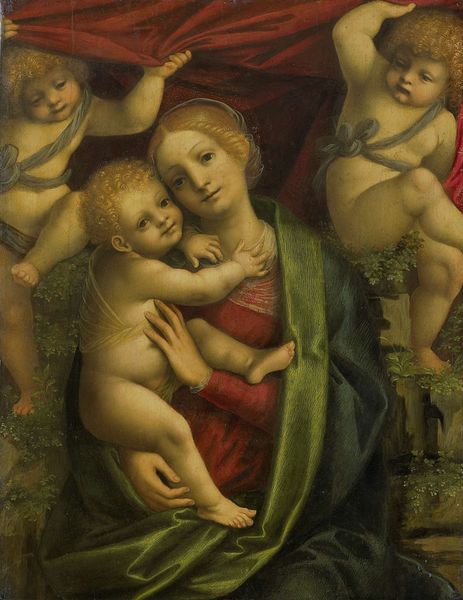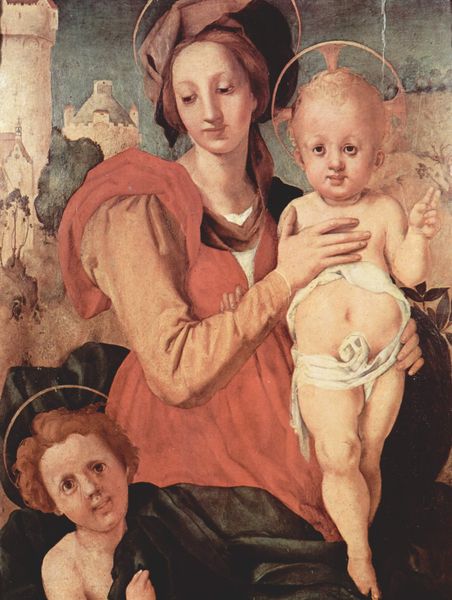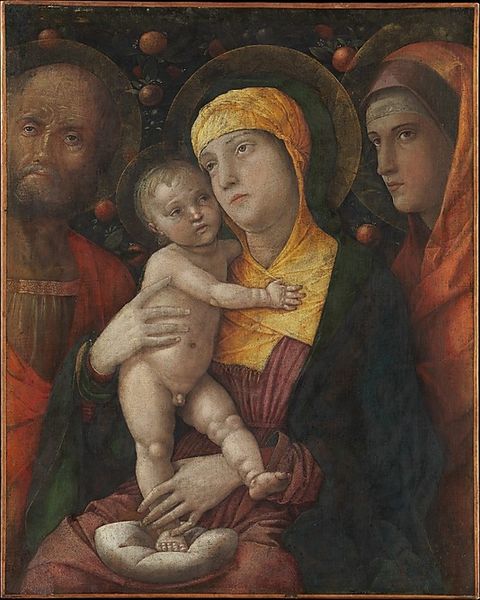
painting, oil-paint
#
portrait
#
narrative-art
#
painting
#
oil-paint
#
classical-realism
#
figuration
#
oil painting
#
christianity
#
history-painting
#
italian-renaissance
#
portrait art
#
christ
Copyright: Public domain
Curator: Here we have Albrecht Durer’s oil painting, "Holy Family," created in 1509, residing at the Museum Boijmans van Beuningen. My first impression: It has a somber, slightly unsettling aura, doesn't it? The figures appear cramped and intense. Editor: Unsettling is a good word. When considering the historical context, Durer painted this in Venice where he went to observe Italian artists techniques and improve his style. There, in his workshop, the work was completed, so it suggests the significance of the workshop as the site of knowledge exchange, not just a place of production of artworks. Curator: I see your point, however I’m curious about his materials in producing this piece, too. This painting displays a mastery of layering, that provides texture to the figures, and how oil paint’s usage was used, from base layer to glazing. What do you think about his production decisions regarding this piece? Editor: His material decision in producing this oil painting should not be taken lightly, as it symbolizes his movement into a mature synthesis. That may be an aesthetic response to this art as religious icon, it can also be seen in the material qualities of art production, such as paint and canvas. It embodies theological debates regarding art practices through its representation. Curator: Fascinating. Speaking of debates, look at the level of realism— almost a hyperrealism, if one can say that about something produced centuries before photography! Note the individual hairs of Joseph’s beard, contrasting with Mary’s almost porcelain skin. It indicates not only Durer's technical skill but a real exploration of materials at hand, wouldn't you say? Editor: Precisely, the meticulous rendering signifies shifting cultural values of family dynamics that had undergone profound changes during the renaissance period. Here the emphasis of light upon family portrait, represents the concept that families are made to bear witness to love’s trials. It reinforces societal constructs and the burdens often disproportionately borne by women and children throughout history. Curator: You bring an entirely new layer into the art! I appreciate how that perspective invites reflection on how traditional family structures continue to operate even now, perhaps upholding old notions of what they should do within our capitalist world. Editor: Indeed, by investigating further, this artwork transforms from religious icon to a testament of societal expectation and an acknowledgment of untold histories embedded in family relations. Curator: Well, reflecting on our discussion here, there’s the process that makes "Holy Family" special. The materiality of this artwork creates much reflection and conversation as we consider it. Editor: Absolutely, there’s depth through not only a personal exploration but one with society in mind.
Comments
No comments
Be the first to comment and join the conversation on the ultimate creative platform.
